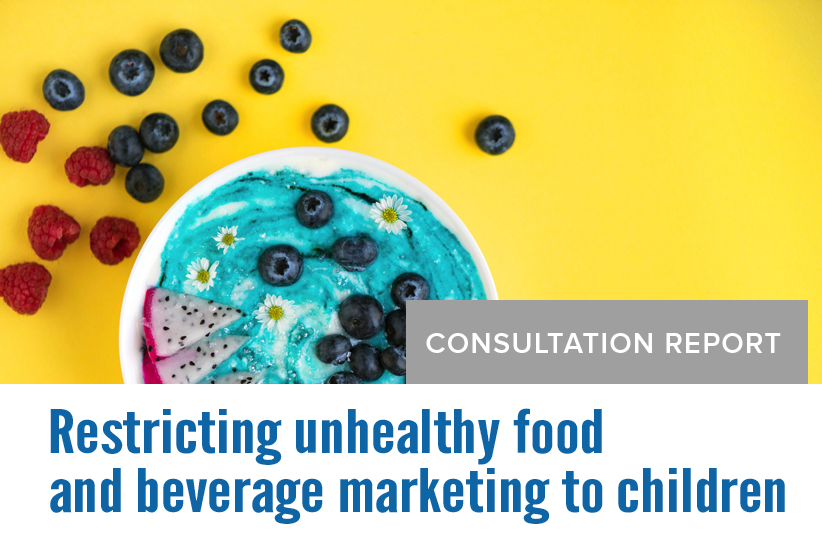After exploring the history and development of Canada’s Food Guide when writing our blog post on The Food Guide War in April, we became more curious about youth and their perception on nutrition.
As we all know, marketing foods and beverages is a complicated subject, and parents today tend to be willing to buy more for their kids because of factors like: smaller family sizes, dual incomes, or postponing the choice to have children until later in life. This tends to mean that families have more disposable income. Since children today have more decision-making power within the family than in previous generations, kids can be more vocal about what they want their parents to buy.
Government Action
To address rising obesity rates in Canadian children, the Government of Canada wants to reduce how much advertising children are exposed to when it comes to unhealthy food and beverages. Before action can be taken, some information needs to be collected on how to help make decisions on what is interpreted as “unhealthy food” and what kind of advertising should be allowed to target kids.

Goals for specific new measures:
- What is the right age limit for restrictions?
- How should “unhealthy food” be defined for the purpose of restrictions in marketing?
- What kinds of marketing techniques should not be restricted?
- How can we determine if an advertisement is directed at children?
Consultation Report
In the summer of 2017, Health Canada asked for the publics input on their proposed approach Toward Restricting Unhealthy Food and Beverage Marketing to Children. For two months, Health Canada collected input from all interested Canadians online. As a result, Bill S-228, “An Act to amend the Food and Drugs Act (prohibiting food and beverage marketing directed at children)” was passed by the Senate on September 28, 2017. After undergoing a First and Second reading in House of Commons, it was referred to the Standing Committee on Health; they have completed their review.
The Consultation Report: Restricting Marketing of Unhealthy Food and Beverages to Children in Canada summarizes the over 1,100 responses that they received. There are some predictable, some surprising and also some enlightening results based on the goals of the report.
Amendments
On May 1, 2018, two amendments were made including reducing the age of restriction to “under 13” (from “under 17”). Despite the significant change in age restriction within the amendments, there are still concerns by some regarding lack of attention to confronting marketing decisions of sponsorship of sporting events/sports activities (e.g. Timbit hockey), charity partnerships and fundraising. Depending on interpretation of the regulations, the current version of the Bill could prohibit these types of activities—but that would also hinge on an individuals comprehension or rationale of the term “unhealthy food”. In addition, this also leans on defining whether an unhealthy food is advertised in a manner that is primarily directed at children.

What’s Next?
The Government of Canada is still aiming for Bill S-228 to receive Royal Assent by June 2018 with regulations to follow.
For this reason, we encourage anyone affected by the Bill to monitor this issue closely and voice any concerns.

If you are interested in participating in future consultation opportunities with Health Canada, please add yourself to the CSIMS registry.




